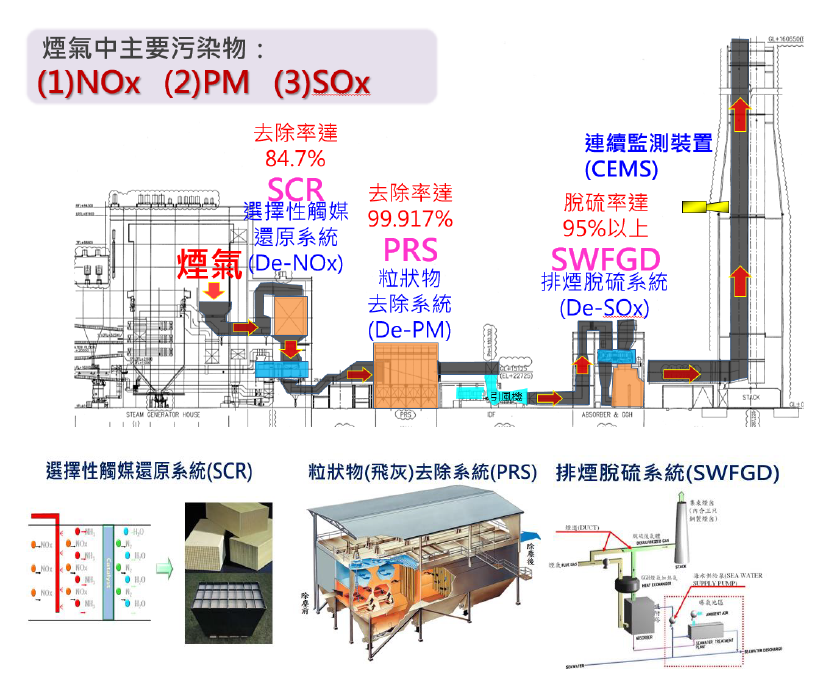Air Quality Control System (AQCS) for Coal-fired Power Plants and Power Plants AQCS Retrofit Projects
03/14/24
AQCS for Coal-Fired Power Plants
After burned in the boiler, the air pollutants like as the sulfur oxides, nitrogen oxides and particulate matter will be generated from the coal. The following is an explanation of the air quality control system.

Nitrogen Oxides Control Technologies
NOx control technologies may be placed in two categories: low-NOx burners (LNB) and selective catalytic reduction (SCR). LNB and over fire air system (OFA) reduce the amount of NOx produced in the primary combustion zone. In contrast, SCR reduce the NOx present in the flue gas away from the low-NOx burners.
SCR is a post combustion NOx reduction technology in which NH3 is added to the flue gas, which then passes through layers of a catalyst, the NH3 and NOx react on the surface of the catalyst, forming N2 and water. NOx reductions achieved at these applications accounted for 80%, the following is the explanation of the process.
Particulate Matter Control Technologies
The following picture shows that it can remove more than 99.8% particulate matter through the Electrostatic precipitator (ESP).
The particulate matter collected by ESP called fly ash, which widely being used in constructing material.
Sulfur Oxides Control Technologies
Flue-gas desulfurization (FGD) is a set of technologies used to remove sulfur dioxide from exhaust flue gas of coal-fired power plants. The FGD may remove 90% percent or more of the sulfur oxides, the following is the flue-gas desulfurization.
FGD used by coal-fired power plants remove sulfur from combustion gas and produces "FGD gypsum," which is chemically nearly identical to mined natural gypsum and provides a wide-range of environmentally friendly applications.
Processing or Improved Efficiency
Environmental Protection Agency (EPA) published“The Emissions Limits for the Electric Generating Units”that has been tightened in order to decrease the environmental impacts caused by the air pollutants from the thermal power plants. TPC has to reinforce the renewing of the relative devices and promote the betterment work of the Air Quality Control System. TPC have already finished the program of the Taichung power plant AQCS retrofit project.
In order to grasp the condition of the emissions immediately, all the power plants are equipped the continuous emissions monitoring systems (CEMS) to measure the emissions, to meet with the standard and decrease the environmental impacts.
Air Quality Control System Retrofit Project
The Renewing Programs of the Linkou and Dalin Power Plant
TPC has renewed Linkou and Dalin power plants. The new generator is the ultra-supercritical coal-fired unit with 800MW. To meet the rigid standards and to demonstrate the determination of environmental protecting, the 0new generators are equipped the high effective Air Quality Control System (AQCS), such as Fabric Filters (FF), Selective Catalytic Reduction (SCR), and the Sea Water FGD (SWFGD).
Take Linkou power plant as an example, the total investment is about NTD 152.5 billion. and the environmental works occupy 30% of the total investment, which is about NTD 40 billion. It shows a significant change in environmental improvement. The emissions of the particulate matter, sulfur oxides and nitrogen oxides from the renewed generator are 10mg/Nm3, 15ppm and 23ppm.

Linkou power plants Air Quality Control System

Linkou and Dalin power plants air pollution processing